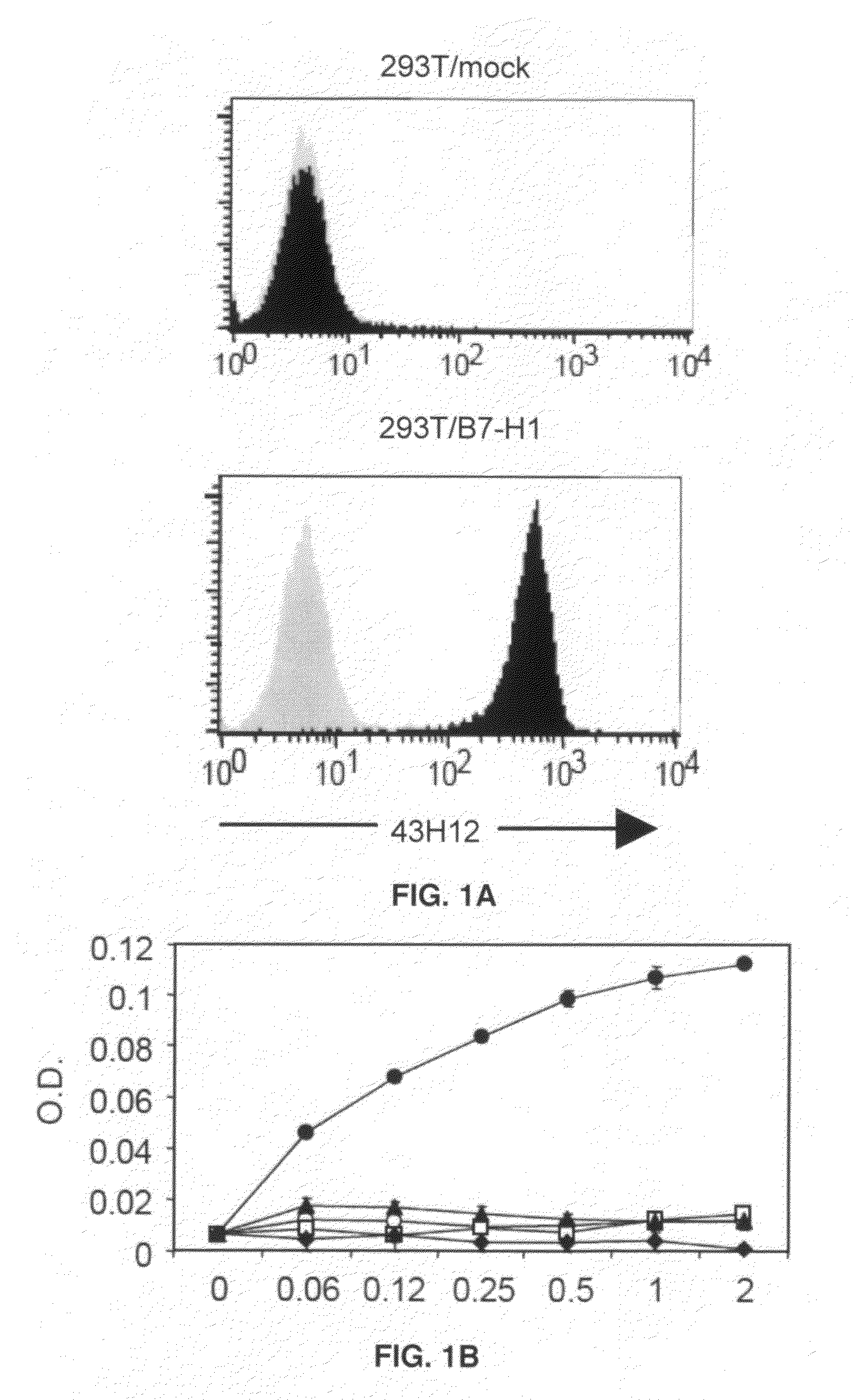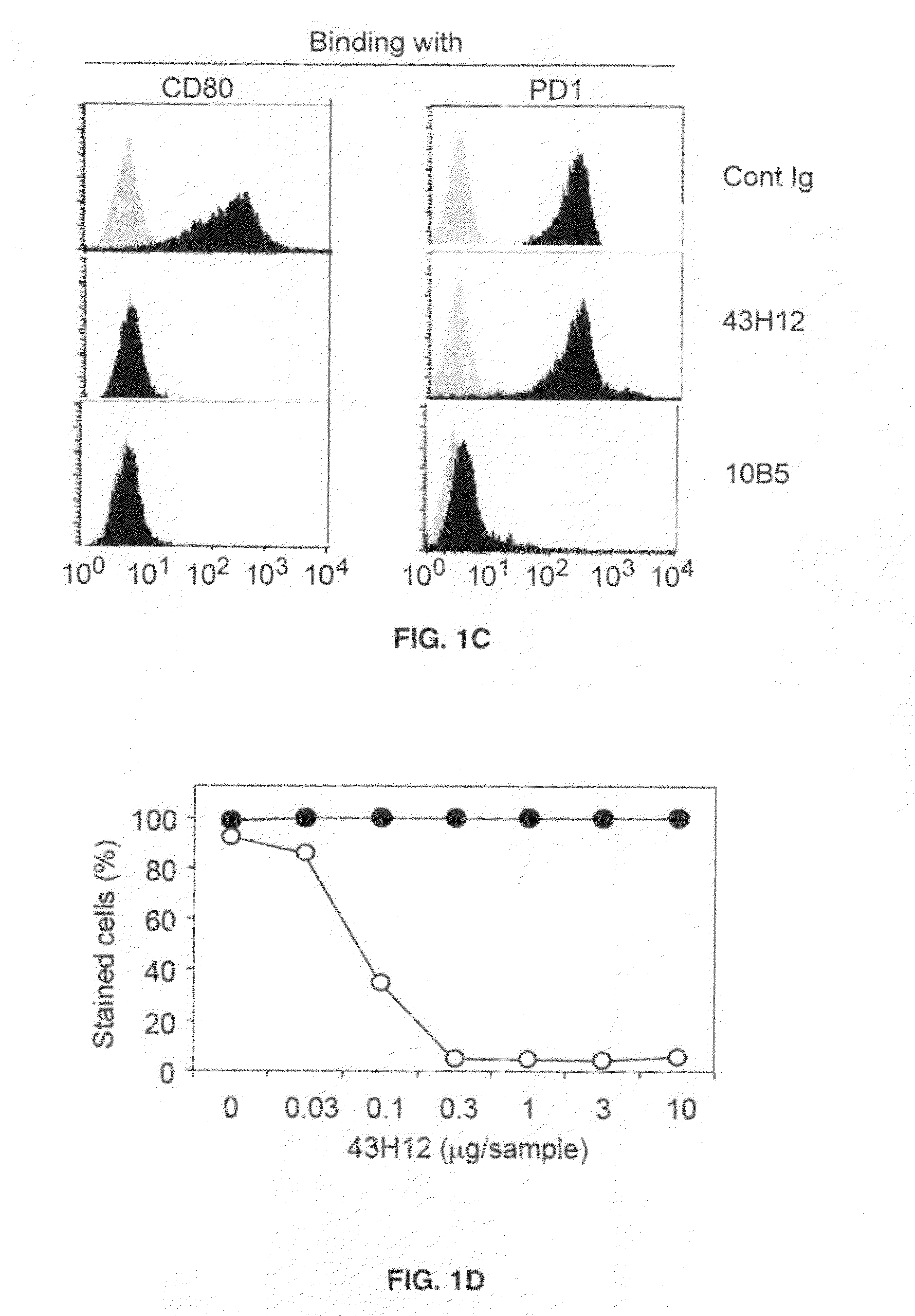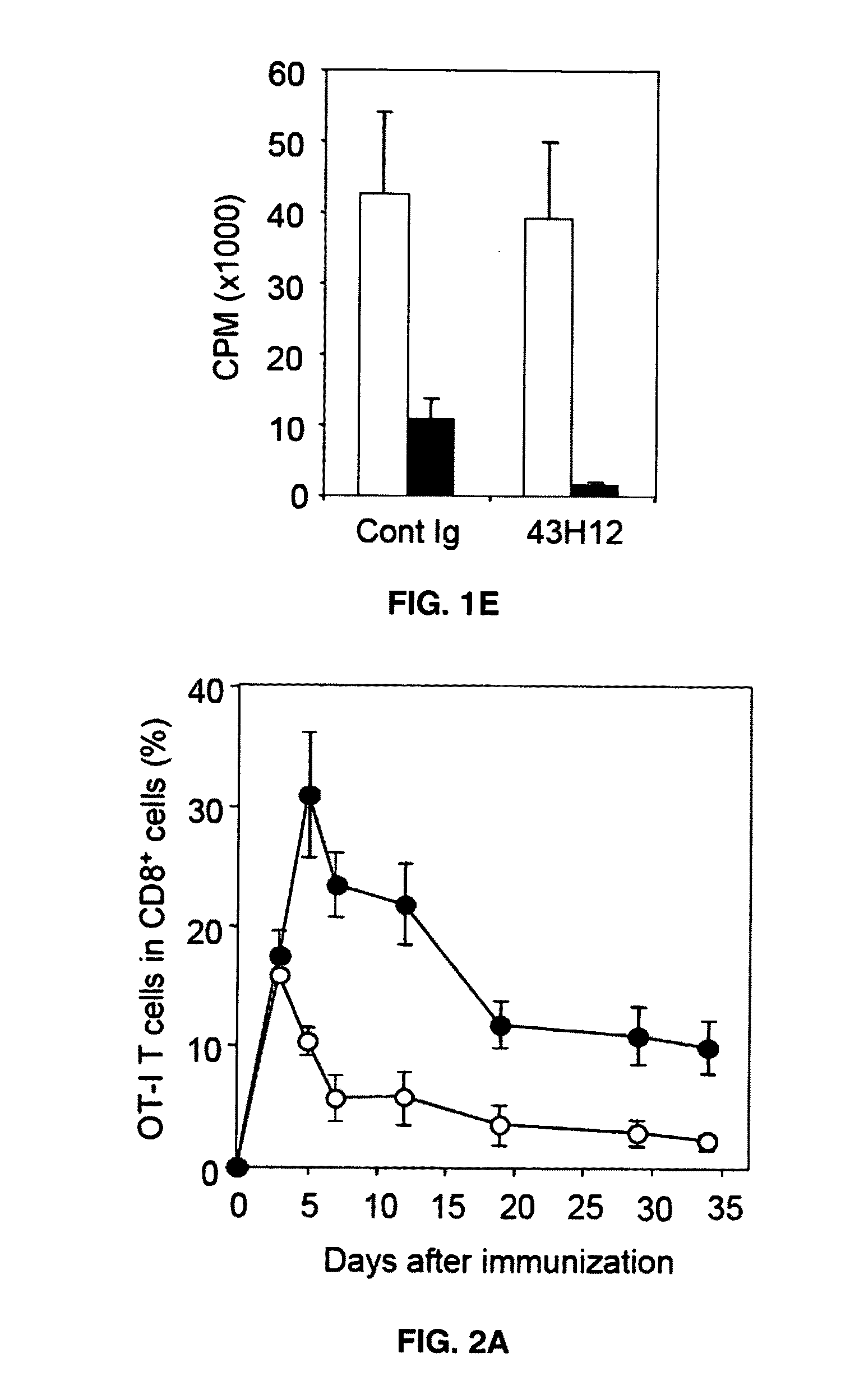Inhibition of B7-H1/CD80 interaction and uses thereof
a b7-h1/cd80 and interaction technology, applied in the field of t cell physiology and cancer, can solve the problems of hardly addressing selective functions, loss of multiple receptor interactions, and complex ligand-receptor interactions, and achieve the effects of preventing t cell anergy induction, restoring ag responsiveness, and enhancing t cell expansion
- Summary
- Abstract
- Description
- Claims
- Application Information
AI Technical Summary
Benefits of technology
Problems solved by technology
Method used
Image
Examples
example 1
Materials and Methods
Mice
[0035]Female C57BL / 6 (B6) and B6-background CD80-knockout (KO) mice were purchased from the National Cancer Institute (Frederick, Md.) and the Jackson Laboratory (Bar Harbor, Me.), respectively. OT-I TCR-transgenic mice were purchased from Taconic (Rockville, Md.). B6-background B7-H1-KO mice were generated by Dr. Lieping Chen (Johns Hopkins University). B7-H1-KO OT-I mice and CD8O-KO OT-I mice were generated by backcrossing OT-I transgenic mice with B7-H1-KO and CD8O-KO mice, respectively. The genotypes of these mice were validated by a flow cytometry using H-2Kb / OVA tetramer and PCR of genomic DNA. All mice were maintained under specific pathogen-free conditions and were used at 6-10 weeks of age.
Peptide, Tetramer, and Antibodies
[0036]The OVA257-264 peptide (SIINFEKL), an H-2Kb-restricted CTL epitope derived from chicken ovalbumin (OVA), was purchased from GenScript (Piscataway, N.J.). Anti-mouse B7-H1 mAb clone 43H12 was generated by immunizing Lewis rats...
example 2
Results
Anti-B7-H1 mAb 43H12 Attenuates B7-H1 / CD80 but not B7-H1 / PD-1 Interaction
[0045]In order to elucidate immunological functions of the B7-H1 / CD80 pathway in vivo, 43H12, a clone of anti-mouse B7-H1 monoclonal antibody which selectively interferes with B7-H1 / CD80 but not B7-H1 / PD-1 interaction was generated. Anti-mouse B7-H1 monoclonal antibody clone 43H12 was generated by immunizing Lewis rats with mouse B7-H1-Ig fusion protein emulsified with CFA or IFA every 2 weeks for total 3 times. Spleen cells from the immunized rats were harvested and fused with Sp2 / 0 myeloma cells so as to generate hybridoma cells. Clones were established by limiting dilution assay and those producing high level anti-B7-H1 monoclonal antibody were selected. Clone producing mAb that selectively interrupts B7-H1 / CD80 but not 87-H1 / PD-1 interaction was isolated and designated as 43H12. It has been known that binding sites of B7-H1 with PD-1 and CD80 are partially overlapped, but also contain the area which ...
PUM
| Property | Measurement | Unit |
|---|---|---|
| size | aaaaa | aaaaa |
| pharmaceutical composition | aaaaa | aaaaa |
| size | aaaaa | aaaaa |
Abstract
Description
Claims
Application Information
 Login to View More
Login to View More - R&D
- Intellectual Property
- Life Sciences
- Materials
- Tech Scout
- Unparalleled Data Quality
- Higher Quality Content
- 60% Fewer Hallucinations
Browse by: Latest US Patents, China's latest patents, Technical Efficacy Thesaurus, Application Domain, Technology Topic, Popular Technical Reports.
© 2025 PatSnap. All rights reserved.Legal|Privacy policy|Modern Slavery Act Transparency Statement|Sitemap|About US| Contact US: help@patsnap.com



